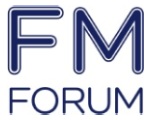Gary Watkins, CEO at Service Works Group, talks about the current challenges facing healthcare and the strength of software solutions.
Wherever you stand on the political divide, it’s clear that public healthcare is facing considerable difficulty. The issues are convoluted and divisive, and unfortunately there is no ‘magic bullet’ that will quickly solve it all. The Carter review, published last year, identified a number of issues that needed tackling if the NHS wants to make significant savings. Tellingly, the report demonstrated the need for real-time monitoring solutions that assist both staff and facility managers when going about their day-to-day work.
Irrespective of whether or not you think the NHS needs more funding, there does seem to be a consensus that every pound invested in the public sector needs to see excellent return. This means accurate reporting, measurement and visualisation of workload and productivity are vital if money already spent in the public sector is to remain in favour with both the incumbent government, and more importantly, the taxpayer.
While much of the responsibility to assess and scrutinise value falls within the remit of chosen officials and the figures available to them, there are other methods of accruing data that remain closer to the realities of those working on the ‘front line’. Part of the problem in assessing value lies with officials’ distance from the day to day – rarely will decision makers spend extended periods of time at the business end of a facility. This can mean workers have trouble articulating operational issues, and without solid workplace evidence to corroborate claims, it can be very difficult to suggest changes in a legitimate way. But with so many vital public services running at and over capacity – particularly healthcare – the need for innovative low-risk solutions is clear. So what can be done?
Transformative …
For healthcare estates, the transformative potential of implementing a strategic CAFM (computer aided facility management) software solution is considerable. Industries’ openness to technological change is testament to the huge benefit that this type of software can have. There has been, and continues to be, exponential growth in the use of software across facility, estate and property management. It may seem dated to speak of the power of software, especially in such a highly connected and rapidly changing world, but there are still certain sectors of the built environment where CAFM has still not been fully realised. It’s important to point this out because entire estates can be monitored to maximise output and value for relatively little expense, especially when compared to the level of labour required for manned on-site auditing. Transparency and information management are vital for managing large areas of space, assets and buildings, as well as the many requests of a diverse workforce and contractual SLAs and KPIs. The comprehensive reporting capability of FM software provides facilities managers with access to business critical information, enabling them to manipulate data to aid strategic FM planning while ensuring complete auditability. In short, in a time when public spending faces unprecedented levels of scrutiny and accountability, the opportunity for CAFM to revolutionise public healthcare is clear.
Case in point …
Service Works Group (SWG) recently completed a bespoke installation of its CAFM software, QFM, at the Royal Hospital for Neuro-disability (RHN) that fundamentally changed the way its hard services and maintenance team operate. The software moved staff from a spreadsheet based process to a tailored logging and reporting system. After trialling and developing the technology in selected hospital wards, the software was installed across the whole estate within six months. Completion of this work enabled real-time visibility of jobs, giving increased control and a clear measurement of work. In addition, there was a 30% improvement in workflow and enhanced reporting; reducing reporting times from 5 days to 3 minutes.
SWG also had the challenge of training around 600 system-users, some of whom worked nights. This was solved by face-to-face training for key personnel and an online training video. The video featured simple step-by-step instructions and could be viewed alongside the helpdesk portal. This point is significant as one of the key messages that the Carter report looked to communicate was the difficulty in engaging staff with the problem of productivity. It suggested that “engaging all NHS staff around the efficiency challenge has a powerful effect in driving productivity and efficiency, and can significantly improve standards of care”.
In this case, then, installing FM software not only improved operational standards, but also gave staff the opportunity to consciously engage with the issues they face and acknowledge positive changes being made, thus improving morale around the site. This is a key consideration for any work in healthcare, as a collaborative workforce is likely to have knock on effect for patients – which is always top priority.
While the RHN is not a public sector case, the work carried out translates directly to public healthcare, as the issues and needs of the site are identical to that of a typical NHS hospital. If the results are as transformative in this setting as they are in the public sector, the savings could be remarkable for the entire NHS estate.
Representing reality …
Importantly, this case shows the value of real-time monitoring and output data that is accrued in the realities of day to day activity. Staff are able to see what has been completed and what still needs attending to in a simple and effective way. This visibility and ease of reporting also allows for managers to quickly assess and address issues on site, which in turn creates a bank of data that remains representative of the hospitals performance for decision makers to analyse. When factoring in the ability for FM software to easily integrate with other built environment offerings, such as BIM and IoT, there is great potential for genuinely useful change. Therein lies the offering of CAFM, it need not be a fundamentally disruptive or overly complicated overhaul of the workplace, but a simple redesign of how people go about their work and how it is recorded.




